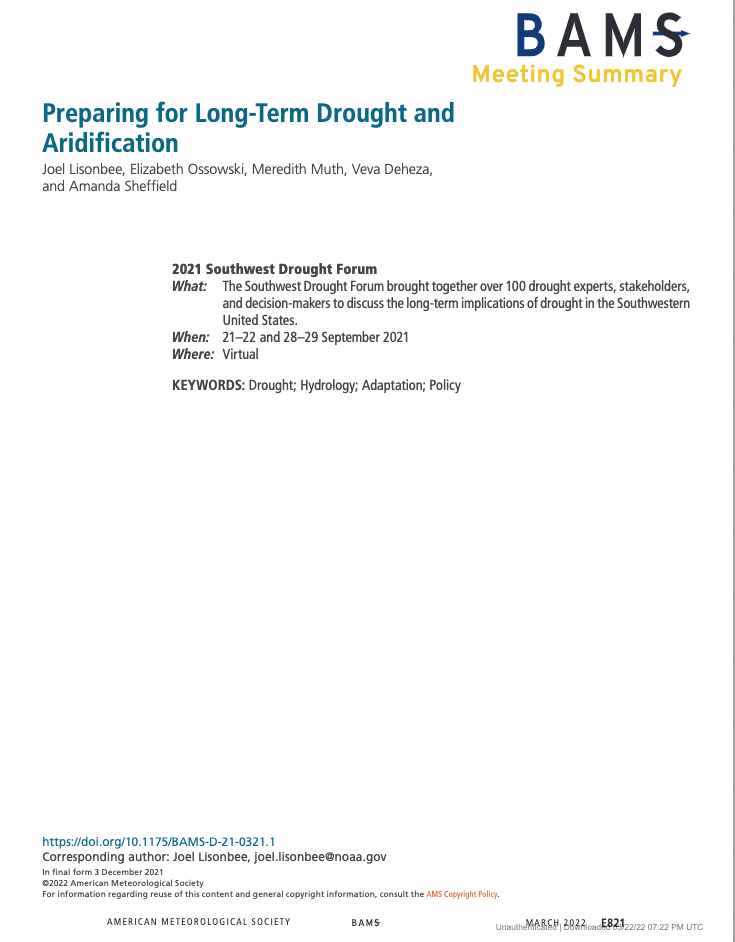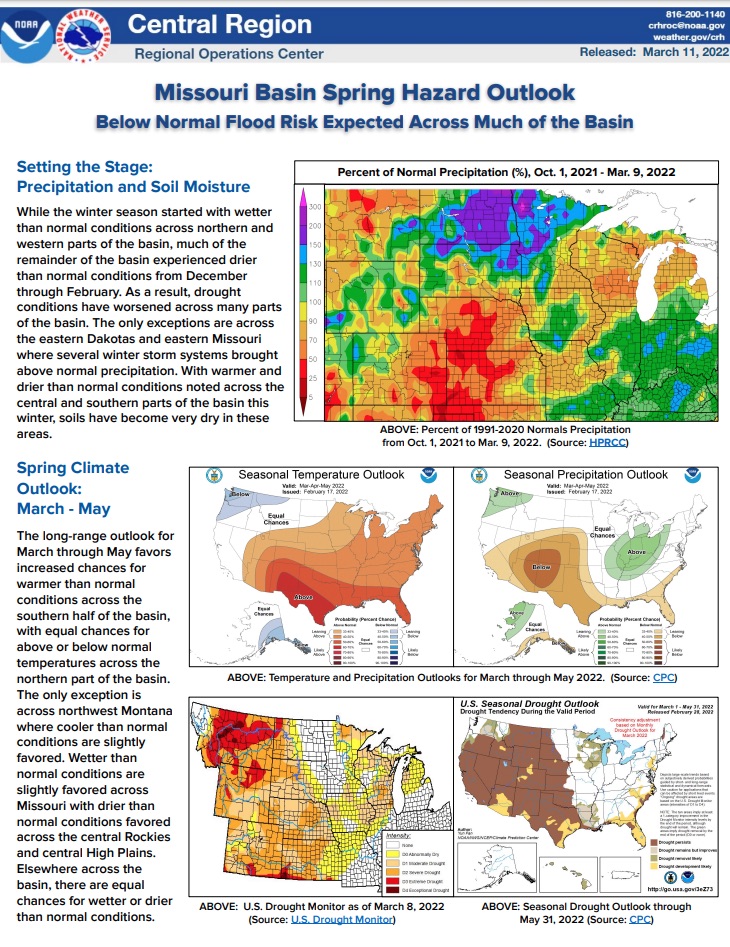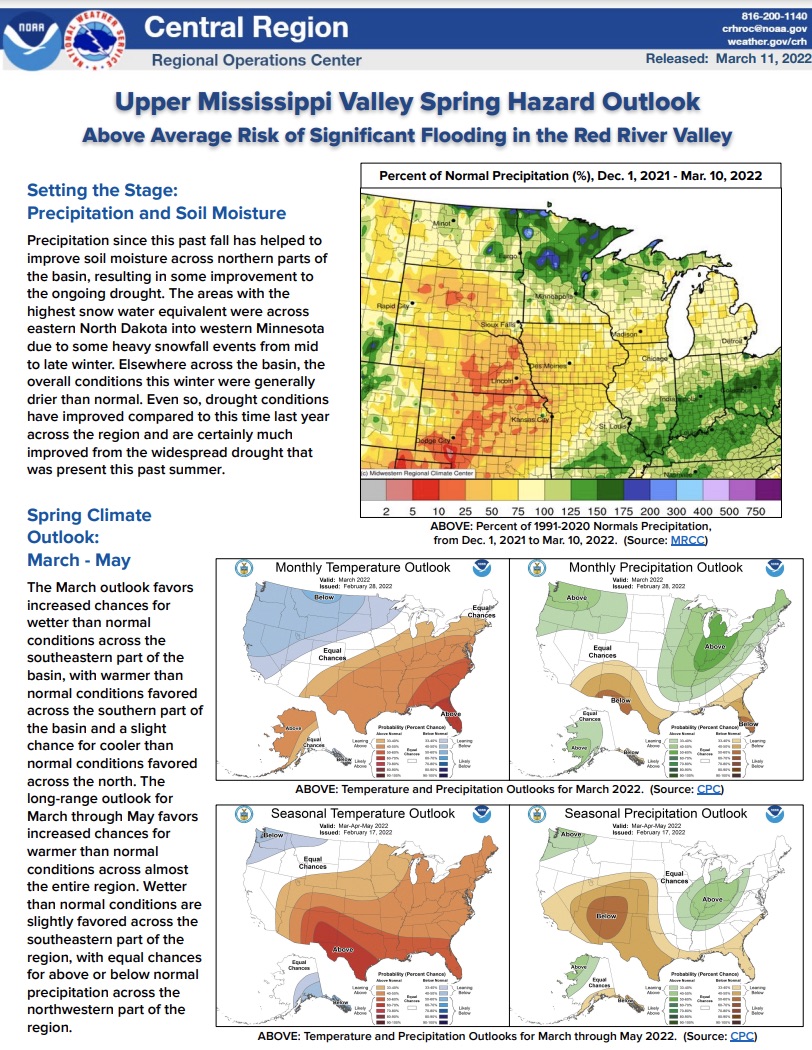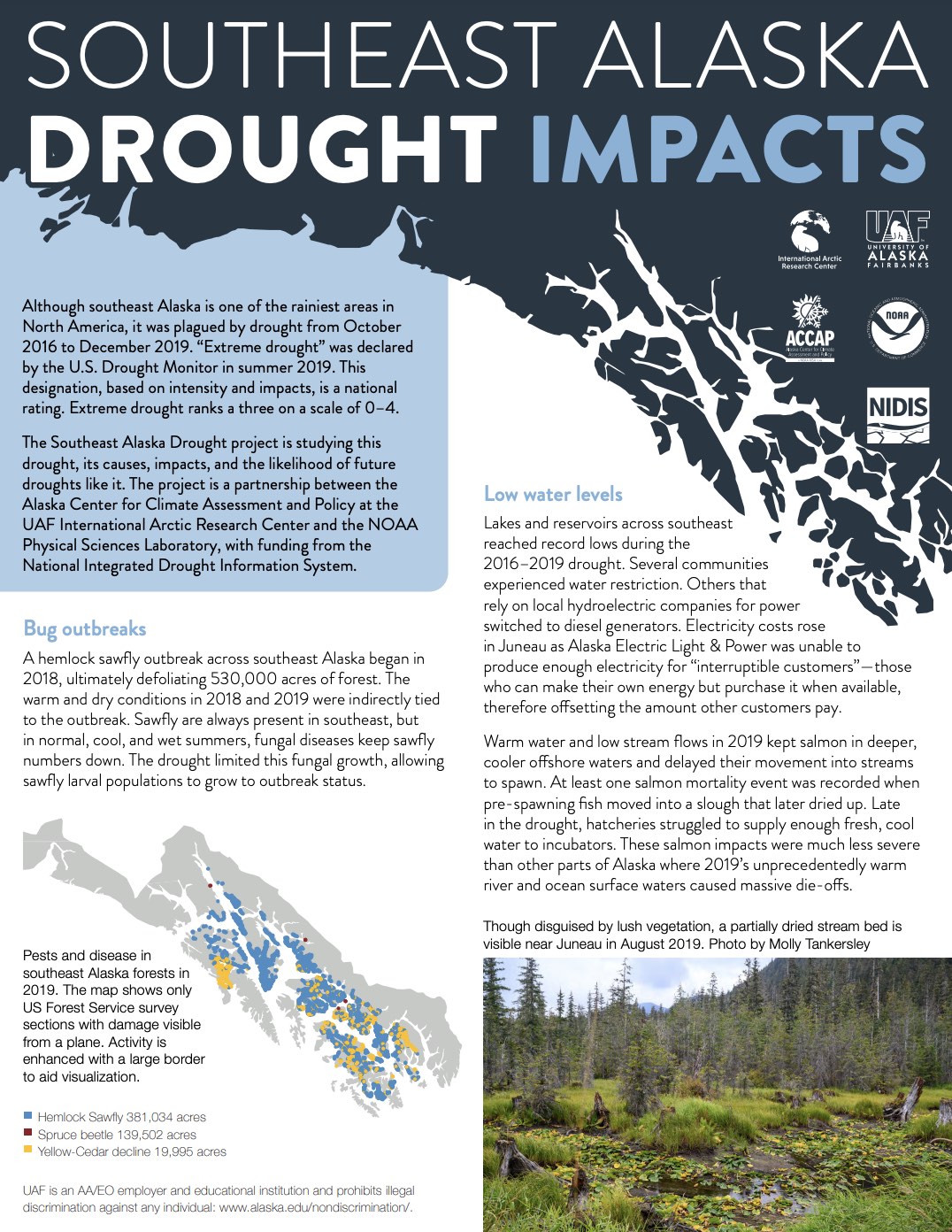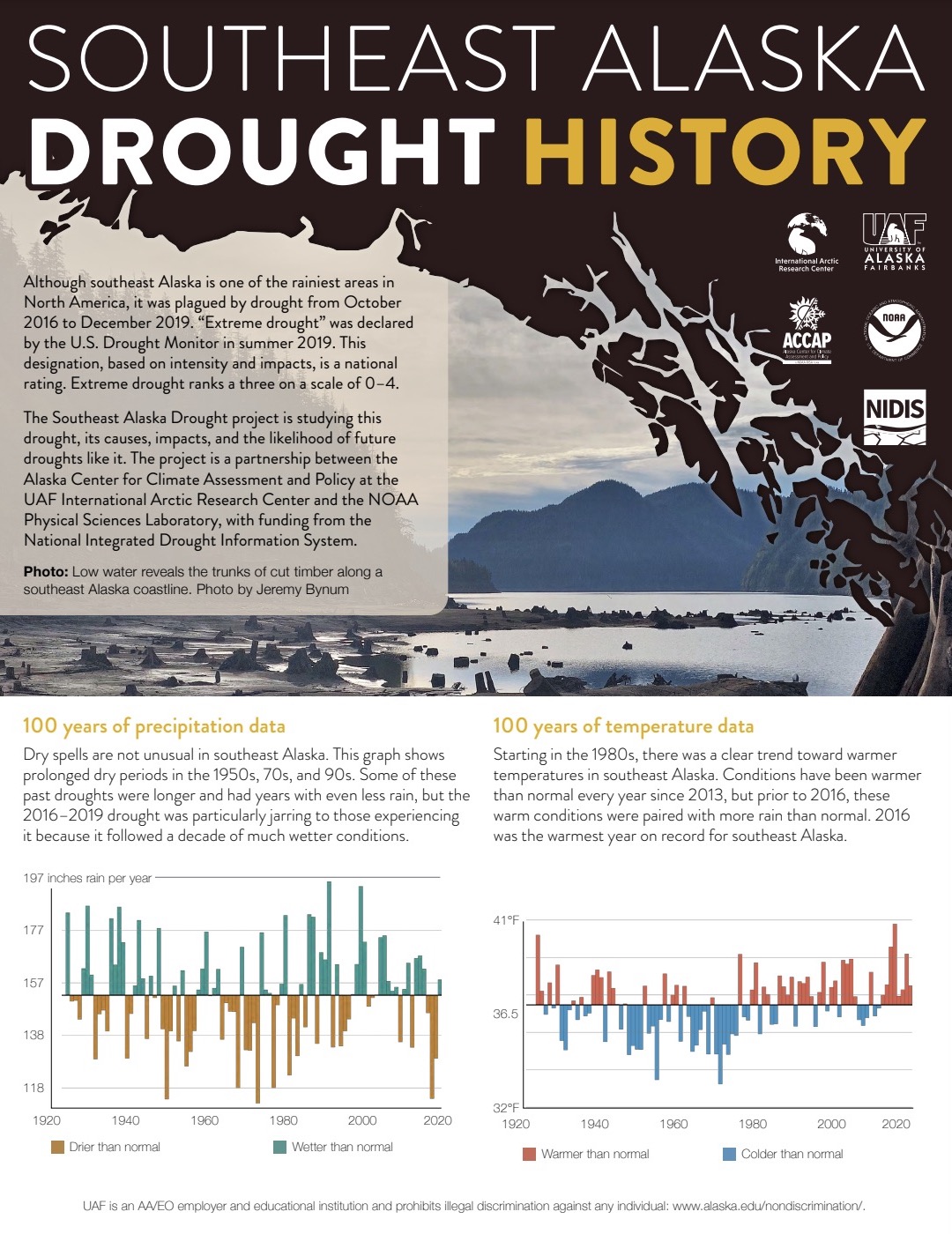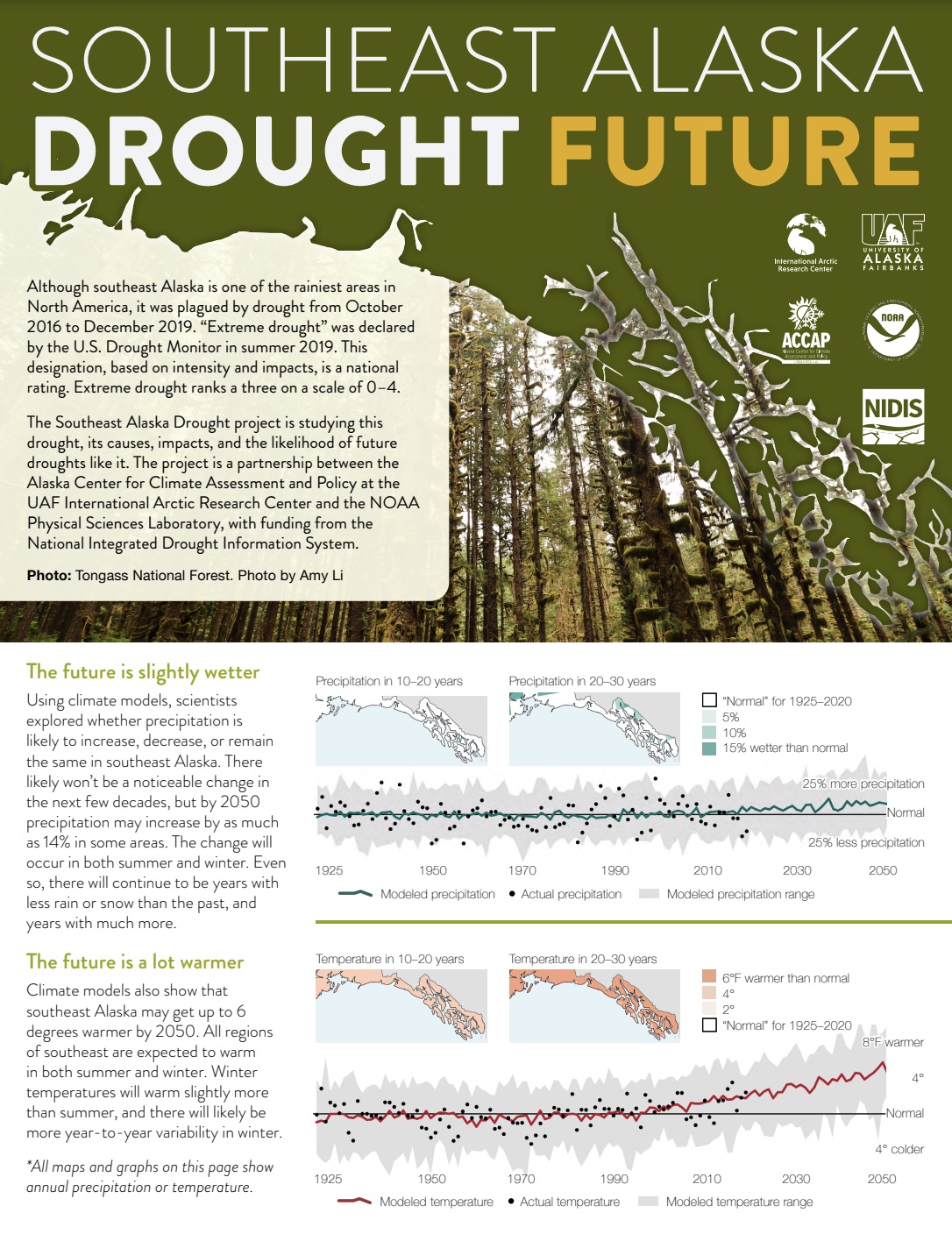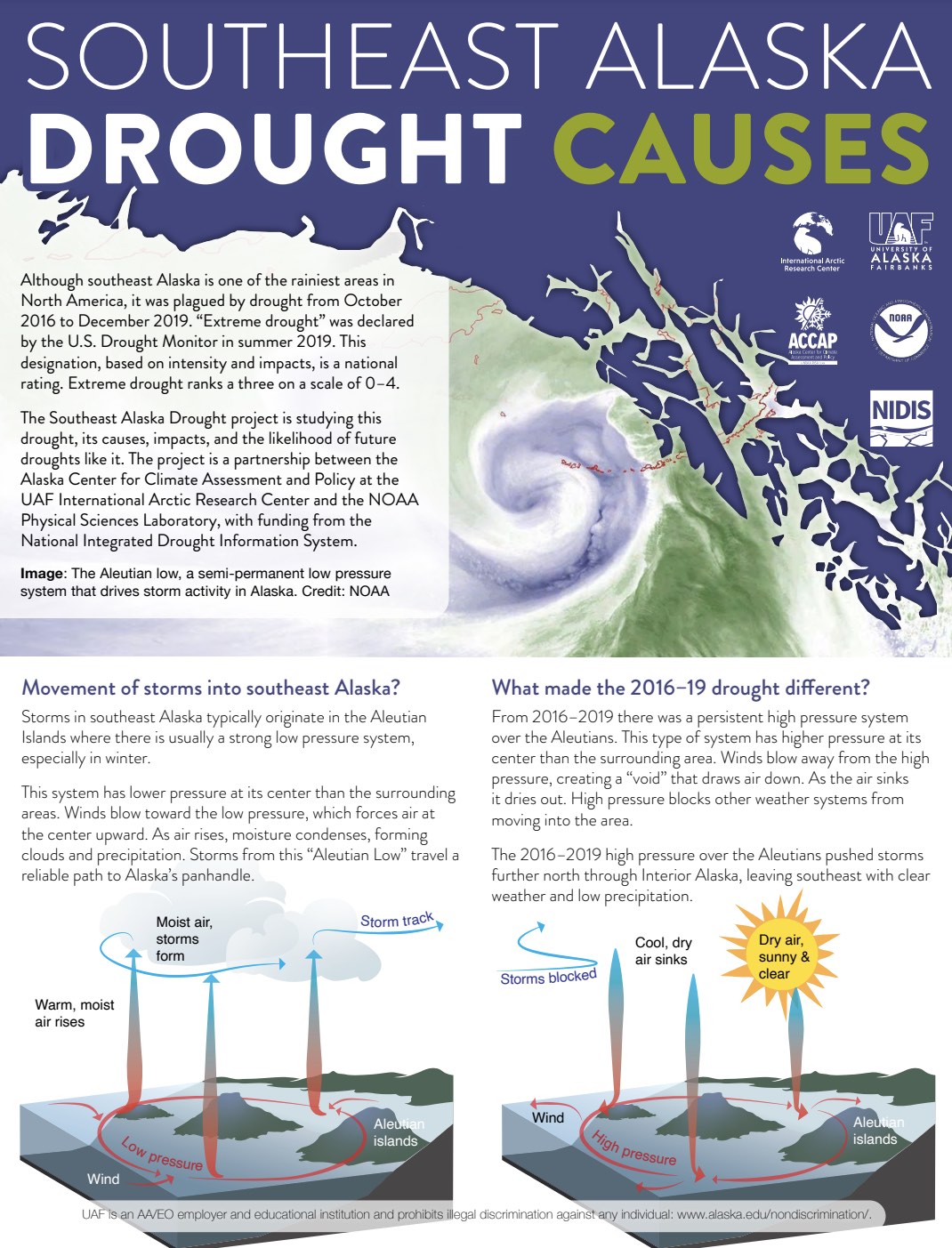The southwestern United States, comprising the states of Arizona, California, Colorado, Nevada, New Mexico, and Utah, is experiencing an historic continuing drought. In early 2020, an extreme deficit in precipitation paired with extremely high temperatures marked a low point in two decades of below-average precipitation across the region.
Quarterly Climate Impacts and Outlook for the Pacific Region for December 2021–February 2022. Dated March 2022.
For the December–February period, precipitation was below normal in Guam, areas of Federated States of Micronesia (FSM), and in northern Republic of the Marshall Islands. Conversely, near- to above-normal rainfall was observed in Palau, Saipan, western/southern FSM, and in American Samoa. In early December, a kona low brought very wet conditions to the Hawaiian Islands before transitioning to abnormally dry conditions in January and February.
The National Weather Service developed 2022 Spring Hazard Outlooks in coordination with NOAA's National Centers for Environmental Information (NCEI) and National Integrated Drought Information System (NIDIS); High Plains Regional Climate Center; Midwestern Regional Climate Center; U.S. Department of Agriculture; and National Interagency Fire Centers' Geographic Area Coordination Centers. This outlook highlights the various spring hazards that could occur and potential impacts across the Missouri River Basin.
The National Weather Service Central Region developed 2022 Spring Hazard Outlooks in coordination with NOAA's National Centers for Environmental Information and National Integrated Drought Information System (NIDIS); U.S. Department of Agriculture; High Plains Regional Climate Center; Midwestern Regional Climate Center; and National Interagency Fire Center's Geographic Area Coordination Centers. This outlook highlights the various spring hazards that could occur and potential impacts across the Upper Mississippi Valley.
The National Weather Service developed 2022 Spring Hazard Outlooks in coordination with NOAA's National Centers for Environmental Information (NCEI) and National Integrated Drought Information System (NIDIS); High Plains Regional Climate Center; Midwestern Regional Climate Center; U.S. Department of Agriculture; and National Interagency Fire Centers' Geographic Area Coordination Centers. This outlook highlights the various spring hazards that could occur and potential impacts across the Mountain West.
The National Weather Service developed 2022 Spring Hazard Outlooks in coordination with NOAA's National Centers for Environmental Information (NCEI) and National Integrated Drought Information System (NIDIS); High Plains Regional Climate Center; Midwestern Regional Climate Center; U.S. Department of Agriculture; and National Interagency Fire Centers' Geographic Area Coordination Centers. This outlook highlights the various spring hazards that could occur and potential impacts across the Ohio River Valley.
Although southeast Alaska is one of the rainiest areas in North America, it was plagued by drought from October 2016 to December 2019. “Extreme drought” was declared by the U.S. Drought Monitor in summer 2019.
This two-page summary focuses on drought impacts in Southeast Alaska and is part of a collection of two-page summaries discussing the findings of the Southeast Alaska Drought Project.
Although southeast Alaska is one of the rainiest areas in North America, it was plagued by drought from October 2016 to December 2019. “Extreme drought” was declared by the U.S. Drought Monitor in summer 2019.
Although southeast Alaska is one of the rainiest areas in North America, it was plagued by drought from October 2016 to December 2019. “Extreme drought” was declared by the U.S. Drought Monitor in summer 2019.
This two-page summary focuses on the future of drought in Southeast Alaska and is part of a collection of two-page summaries discussing the findings of the Southeast Alaska Drought Project.
Although southeast Alaska is one of the rainiest areas in North America, it was plagued by drought from October 2016 to December 2019. “Extreme drought” was declared by the U.S. Drought Monitor in summer 2019.
This two-page summary focuses on the causes of drought in Southeast Alaska and is part of a collection of two-page summaries discussing the findings of the Southeast Alaska Drought Project.


